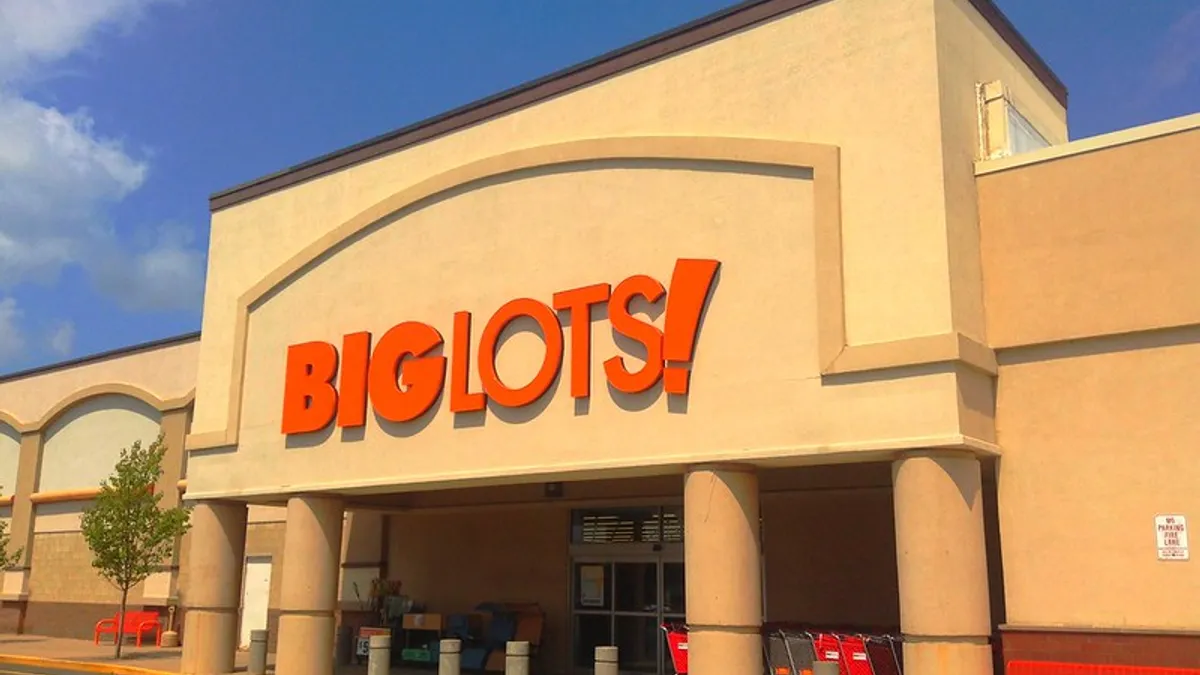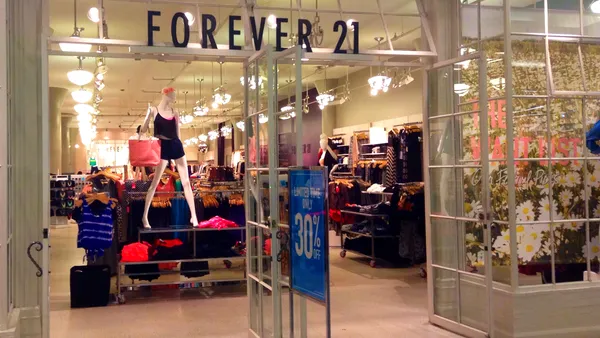Dive Brief:
- Big Lots’ net sales for Q4 fell 7% to $1.43 billion from $1.54 billion a year ago, the company said in a Thursday earnings announcement. Comparable sales fell 8.6%. The retailer’s net loss rose to $30.7 million for the quarter ended Feb. 3.
- The company also ended Q4 with $406 million in long-term debt, up from $301 million a year ago. For the full year, Big Lots’ net sales fell nearly 14% to $4.72 billion from $5.47 billion a year ago. Gross margin also declined nearly 12% to $1.69 billion from $1.91 billion year over year.
- As part of its ongoing turnaround plan, Big Lots said it cut selling, general and administrative expenses by over $140 million for the year, reduced capital expenditures by almost 60% year over year and reduced inventory by nearly $200 million. Those achievements helped it “maintain liquidity through a challenging period,” enabling the company to end Q4 with $254 million in net liquidity, CEO Bruce Thorn said in a statement.
Dive Insight:
Despite a challenging macroeconomic environment and weather challenges, Thorn said Thursday during an earnings call that the company “finished the year in a much better place than where we started. That said, there's a lot of work to do in 2024 and we are moving aggressively to accelerate our transformation.”
Thorn pointed to the company’s progress on its five-point turnaround strategy – owning bargains, communicating unmistakable value, increasing store relevance, winning customers through omnichannel efforts, and driving productivity.
Big Lots achieved nearly 60% bargain penetration in Q4, exceeding its initial goal of 33%, according to the earnings statement.
“We also expect to significantly grow our bargains penetration to 75% of our sales, and within that, have an expanded assortment of extreme bargains,” Thorn said. “By leaning in further on our heritage of providing unmistakable value to consumers, we will solidify our position as America's Discount Home Store."
Thorn said the company is flexing its assortment to capture customer demand and the strategy is “showing encouraging results.” That flex involves increasing inventory in top-performing categories, like pets, while cutting inventory in lower-performing categories, including limiting the assortment to more productive SKUs in food and consumables. The company gained over 500 SKUs with the acquisition last month of Hearthsong’s full inventory of indoor and outdoor toys, games and children’s decor, worth $22 million.
CFO Jonathan Ramsden said on the call the company’s outlook is for quarterly year-over-year improvements to continue through this year with a path to positive comps as the year progresses, along with significant gross margin rate improvement in every quarter versus last year.
However, despite some performance improvements, a soft finish to the year and a heavy debt load call Big Lots’ long-term survival into question, Neil Saunders, managing director of GlobalData, said in emailed comments.
“Management is eager to emphasize that the fourth quarter was materially better than the three that preceded it. In a way, this is true – but it is very much a case of the numbers being a little less terrible than they have been, rather than a signal that Big Lots is back on track,” Saunders said.
Saunders said Big Lots has two main issues – a “very jumbled and muddled” assortment, which creates an unsatisfactory shopping experience compared to other retailers in the segment and secondly, Big Lots isn’t always the best value for the money. Potential customers can sometimes find the same things cheaper at Target or Walmart.
“In good times when finances are not being crunched, this might be something consumers are willing to overlook. However, in the current environment where every cent counts, people are shopping around more and comparing prices more. As they have done so, Big Lots has been found wanting,” Saunders said.
Big Lots on Tuesday also announced that Maureen Short joined its board of directors. Short previously was chief financial officer of Rent-A-Center from 2016 to 2022.













